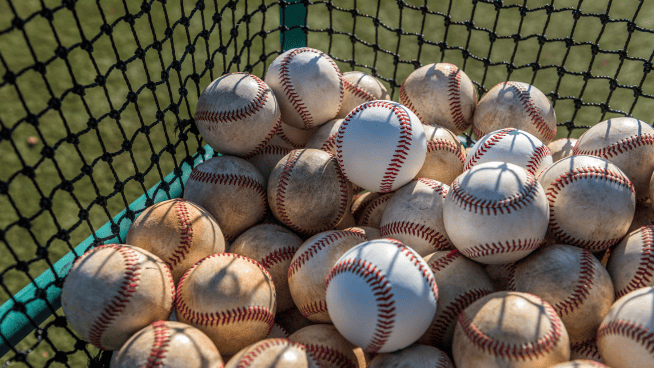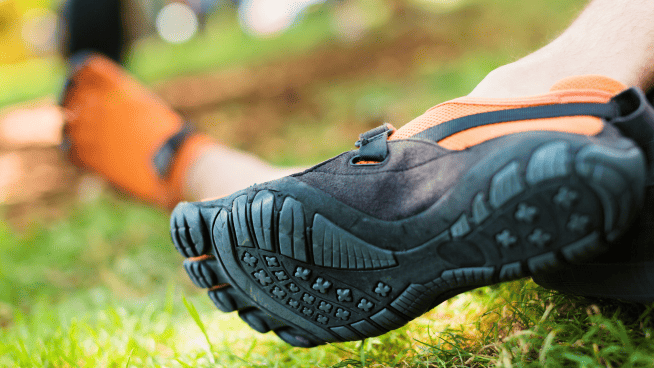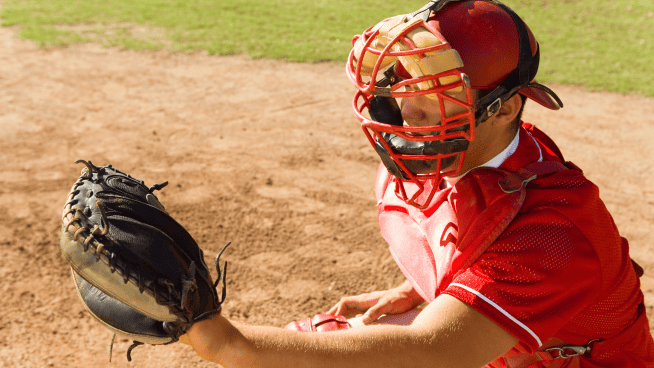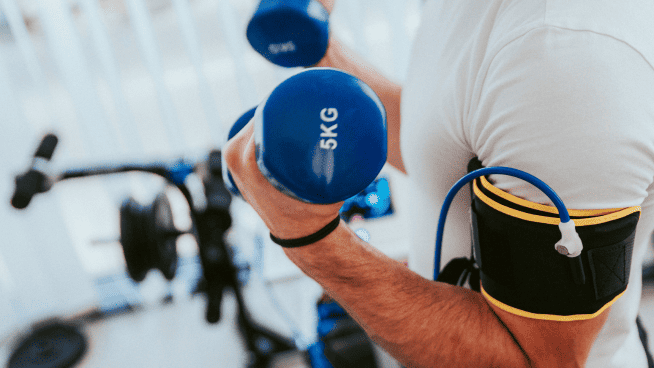Single-Sport Athletes Have a Much Higher Risk of Injury. Here’s What They Can Do to Combat It
As competitive as sports are today, young athletes are specializing earlier and earlier each year. Where once seeing athletes playing 3-plus sports was a common sight, it’s now rare for an athlete to play more than one or two.
This push by coaches and parents for athletes to focus on a single sport allows for more training, practice and games in that given sport, but it also increases the likelihood of over-use injuries. A study from the University of Wisconsin found that high school athletes with a “high specialization classification” had an 85-percent higher incidence of lower extremity injuries than high school athletes with a “low specialization classification.” Essentially, athletes who specialized were found to be at a much higher risk of lower extremity injury than athletes who play and train in multiple sports.
STACK is firmly in favor of the multi-sport athlete for a variety of reasons, but we do understand that some young athletes will only play one sport, whether it be their own decision or the decision of their parents. No matter what your situation, it’s your right to know how to make the most of your athletic career. With that in mind, here are four tips to help single-sport athletes reduce their risk of overuse injury.
1. Schedule Time Off
For many, it’s easy to fall into the “the more, the better” trap. Many parents are in a race to get their child to the 10,000 hours of deliberate practice Malcolm Gladwell popularized. But the truth is that continual year-round practice can quickly lead to burnout and injury.
For all athletes, but especially single-sport athletes, it’s important to schedule time off throughout the year. This does two things. One, it gives the body a chance to repair any damaged tissue, which can occur from repetitive motions, like throwing a baseball. Secondly, it gives athletes a chance to “recharge their batteries,” ensuring they do not feel burnt out from the non-stop practice and games.
Four months off might be a good starting point for single-sport athletes, as a 2016 study published in The American Journal of Sports Medicine found athletes who competed in one sport eight or more months a year were three times more likely to experience an overuse injury in the knee or hip.
Single-sport athletes should also have a couple days off from their sport each week. The UCONN School of Sports Medicine recommends a youth athlete should not spend more hours than their age on a single sport in a given week. For example, a 9-year-old kid should be at soccer training/practice/games no more than 9 hours per week.
2. Strengthen Antagonist Muscles
Athletes who continually perform the same action in their sport, such as hitting a volleyball, build strength in the muscles used in that motion. This is no surprise to anyone. However, what many people do not take into account is the imbalance it creates with the antagonist muscles of the body, meaning the muscles on the other side of the joint. This imbalance can eventually create unstable joints and lead to injury.
To prevent these imbalances, athletes should not neglect these antagonist muscles in their strength program. For most sports, these are the muscles of the upper back and posterior shoulder. An easy rule to follow is to perform two antagonist muscle exercises for every one exercise that mimics the motion of the sports.
3. Maintain General Fitness
Perhaps the most important thing a single-sport athlete can do is maintain an adequate level of general fitness. It may be tempting for a soccer player to only train their legs or a pitcher to only strength their throwing arm, but this only amplifies the imbalances many of these athletes have.
The early offseason is the ideal time to work on this general fitness. With the use of circuit training and basic bodybuilding methods, athletes will be able to strengthen areas of their bodies that are neglected during more specialized training near the season.
4. Embrace Play
Organized sports aren’t the only way to play. Young athletes who choose to specialize can benefit tremendously from participating in a variety of pick-up games and play activities like rollerblading, bike riding, swimming, tag, capture the flag, etc. Every sport and activity challenges the body differently, providing a welcome change from their sport and helping build more versatile and resilient athletes.
Photo Credit: RBFried/iStock
READ MORE:
RECOMMENDED FOR YOU
MOST POPULAR
Single-Sport Athletes Have a Much Higher Risk of Injury. Here’s What They Can Do to Combat It
As competitive as sports are today, young athletes are specializing earlier and earlier each year. Where once seeing athletes playing 3-plus sports was a common sight, it’s now rare for an athlete to play more than one or two.
This push by coaches and parents for athletes to focus on a single sport allows for more training, practice and games in that given sport, but it also increases the likelihood of over-use injuries. A study from the University of Wisconsin found that high school athletes with a “high specialization classification” had an 85-percent higher incidence of lower extremity injuries than high school athletes with a “low specialization classification.” Essentially, athletes who specialized were found to be at a much higher risk of lower extremity injury than athletes who play and train in multiple sports.
STACK is firmly in favor of the multi-sport athlete for a variety of reasons, but we do understand that some young athletes will only play one sport, whether it be their own decision or the decision of their parents. No matter what your situation, it’s your right to know how to make the most of your athletic career. With that in mind, here are four tips to help single-sport athletes reduce their risk of overuse injury.
1. Schedule Time Off
For many, it’s easy to fall into the “the more, the better” trap. Many parents are in a race to get their child to the 10,000 hours of deliberate practice Malcolm Gladwell popularized. But the truth is that continual year-round practice can quickly lead to burnout and injury.
For all athletes, but especially single-sport athletes, it’s important to schedule time off throughout the year. This does two things. One, it gives the body a chance to repair any damaged tissue, which can occur from repetitive motions, like throwing a baseball. Secondly, it gives athletes a chance to “recharge their batteries,” ensuring they do not feel burnt out from the non-stop practice and games.
Four months off might be a good starting point for single-sport athletes, as a 2016 study published in The American Journal of Sports Medicine found athletes who competed in one sport eight or more months a year were three times more likely to experience an overuse injury in the knee or hip.
Single-sport athletes should also have a couple days off from their sport each week. The UCONN School of Sports Medicine recommends a youth athlete should not spend more hours than their age on a single sport in a given week. For example, a 9-year-old kid should be at soccer training/practice/games no more than 9 hours per week.
2. Strengthen Antagonist Muscles
Athletes who continually perform the same action in their sport, such as hitting a volleyball, build strength in the muscles used in that motion. This is no surprise to anyone. However, what many people do not take into account is the imbalance it creates with the antagonist muscles of the body, meaning the muscles on the other side of the joint. This imbalance can eventually create unstable joints and lead to injury.
To prevent these imbalances, athletes should not neglect these antagonist muscles in their strength program. For most sports, these are the muscles of the upper back and posterior shoulder. An easy rule to follow is to perform two antagonist muscle exercises for every one exercise that mimics the motion of the sports.
3. Maintain General Fitness
Perhaps the most important thing a single-sport athlete can do is maintain an adequate level of general fitness. It may be tempting for a soccer player to only train their legs or a pitcher to only strength their throwing arm, but this only amplifies the imbalances many of these athletes have.
The early offseason is the ideal time to work on this general fitness. With the use of circuit training and basic bodybuilding methods, athletes will be able to strengthen areas of their bodies that are neglected during more specialized training near the season.
4. Embrace Play
Organized sports aren’t the only way to play. Young athletes who choose to specialize can benefit tremendously from participating in a variety of pick-up games and play activities like rollerblading, bike riding, swimming, tag, capture the flag, etc. Every sport and activity challenges the body differently, providing a welcome change from their sport and helping build more versatile and resilient athletes.
Photo Credit: RBFried/iStock
READ MORE:









